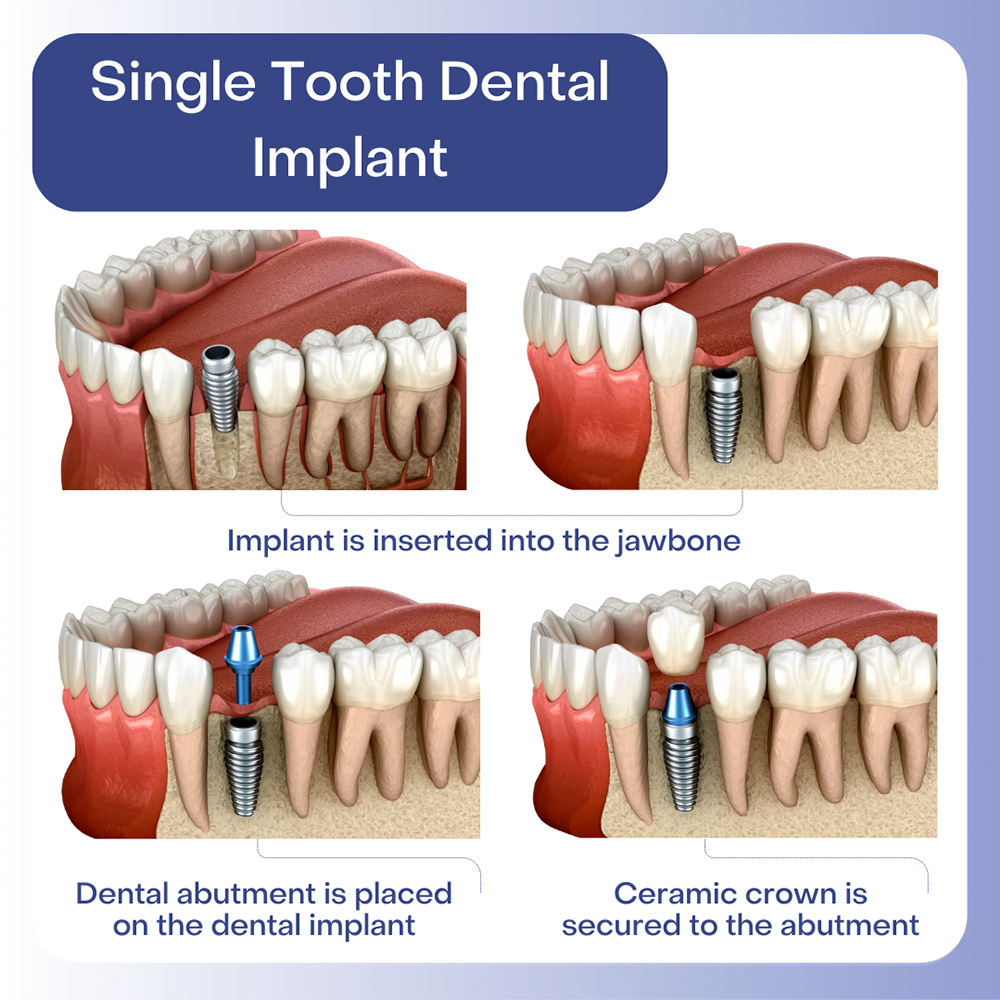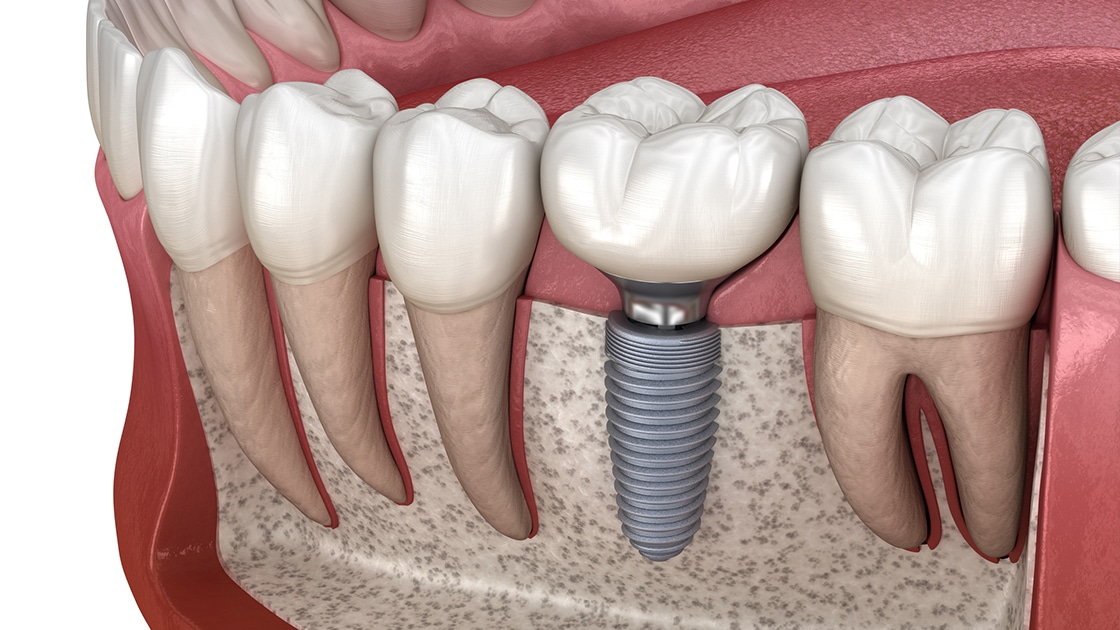The 5-Second Trick For Dental Sense
Table of ContentsDental Sense - The FactsDental Sense for BeginnersLittle Known Facts About Dental Sense.Everything about Dental Sense
are medical devices surgically dental implanted into the jaw to restore a person's ability to chew or their appearance. They offer assistance for fabricated (phony) teeth, such as crowns, bridges, or dentures. When a tooth is lost as a result of injury or condition, an individual can experience complications such as fast bone loss, defective speech, or adjustments to eating patterns that lead to discomfort.Oral dental implant systems contain an oral implant body and oral implant joint and may likewise consist of an abutment fixation screw. Wisdom tooth cavity. The oral implant body is surgically put in the jawbone instead of the tooth's root. The oral implant abutment is typically connected to the dental implant body by the abutment fixation screw and prolongs via gums into the mouth to sustain the connected synthetic teeth
(https://www.startus.cc/company/dental-sense)Framework of The Oral Implant System selecting dental implants, speak to your oral provider about the prospective advantages and risks, and whether you are a prospect for the treatment. Things to think about: Your general health is a vital factor in determining whether you are a great prospect for oral implants, for how long it will certainly take to recover, and just how long the dental implant may remain in area.
Smoking cigarettes might influence the healing procedure and lower the long-term success of the dental implant. The recovery procedure for the dental implant body might take several months or longer, during which time you normally have a temporary joint instead of the tooth. the oral implant treatment: Meticulously adhere to the dental health directions provided to you by your dental supplier.
Dental Sense for Beginners
Implant failing can result in the demand for another operation to repair or change the dental implant system. Brings back the capability to chew Recovers aesthetic appearance Assists keep the jawbone from reducing because of bone loss Maintains the health and wellness of the surrounding bone and gums Assists maintain adjacent (close-by) teeth secure Boosts lifestyle Damage to surrounding natural teeth during dental implant placement Injury to the surrounding tissues throughout surgical treatment, such as sinus opening Injury throughout surgical procedure (as an example, crack of bordering jawbone) Poor function, such as seeming like the teeth do not attack with each other usually A feeling that the tooth is loose or twisting in position resulting from an abutment screw loosening Implant body failure (looseness of the dental implant body) as a result of systemic infection, which may be more probable in individuals with unrestrained diabetes mellitus due to regional infection in bone and periodontals supporting the implant body due to delayed recovery, which may be a lot more likely in patients that smoke Difficulty cleansing the periodontals around the dental implant, leading to inadequate dental hygiene Untreated gum condition Post-surgical numbness as a result of nerve impingement or damage Constantly notify healthcare service providers and imaging service technicians that you have dental implants before any index kind of magnetic vibration imaging (MRI) or x-ray procedures.
FDA is not knowledgeable about any adverse occasions reported for MRI or x-ray treatments with dental implants. Dental implants systems are typically made from materials that follow international consensus criteria of the International Organization for Standardization (ISO) or ASTM International. These standards have information of what makes a safe product.

An oral implant is a structure that changes a missing tooth. With screw-like devices, the doctor inserts a dental implant into the jawbone, and it functions as a support for an artificial tooth, called a crown. A tool called an abutment links the artificial tooth to the dental implant. The crown is custom-made to fit the person's mouth and match the shade of their teeth.
Dental Sense for Dummies
Some people are not eligible for dental implant surgery. It is for dental doctors to operate people with: intense illnessuncontrollable metabolic diseasebone or soft tissue disease or infectionIf these concerns are fixed, a person can have the surgical treatment. In, oral cosmetic surgeons abstain from running on individuals with: If individuals with any one of the above go through dental implant surgical procedure, there is a greater threat of the implant stopping working.

Dental dental implant surgical treatment is an individualized process. It's not the very same for every person. The adhering to offers a basic introduction of what you can expect your dental practitioner, dental specialist, periodontist or prosthodontist to do: Position the implant surgically. Provide you time to heal. Connect the article and final crown, bridge or denture.
Next, your cosmetic surgeon will thoroughly place the dental implant right into your jaw. Finally, your surgeon will rearrange your periodontals and shut the incision with stitches. If your implant is near the front of your mouth, your dentist will certainly make a momentary tooth for you to wear up until you recover. In this way, you will not have a void in your smile while you recover.
Some Known Questions About Dental Sense.
Throughout the healing phase, your jawbone needs to fuse to the dental implant. This procedure can take anywhere from 3 to 9 months.
When your dental implant heals, your dental expert can attach the joint (small port blog post) and your final reconstruction (crown, bridge or denture). This normally takes about one hour to finish and may require a second minor surgery. You shouldn't feel any kind of discomfort throughout your oral implant procedure due to the fact that your company will use medication to numb your gum tissues.